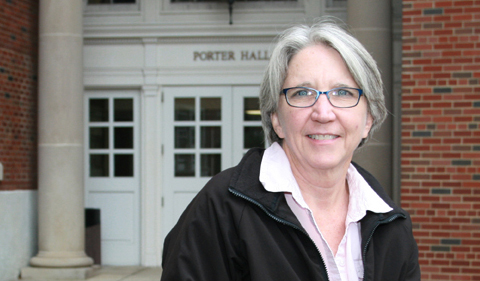By Jessica Vierling-West
From Compass
Dr. Sarah Wyatt, Professor of Environmental & Plant Biology and Director of the Interdisciplinary Graduate Program in Molecular and Cellular Biology at Ohio University, is recognized as an expert in gravitational and space biology. Using cellular and molecular approaches, she examines how plants sense and respond to gravity.
With such an area of expertise comes a tie to NASA, of course. A pair of research projects conducted by Wyatt have been flown to the International Space Station (ISS).
In early 2015 the OHIO Team Gravitron experiment, a partnership between Wyatt and OHIO graduate students Proma Basu and Colin Kruse, launched into space aboard the SpaceX Falcon 9 Dragon Spacecraft. The experiment, titled Biological Research in Canisters-20 (BRIC-20), germinated seeds in space to test protein signals triggered in reaction to a microgravity environment. The project was one of 31 proposals that NASA’s space biology program funded to understand how changes in gravity affect cells, plants and animals.
In 2017 a new NASA-funded experiment in partnership with Chris Wolverton of Ohio Wesleyan University and OHIO graduate student Alexander Meyers launched aboard the Falcon 9. Using the European Modular Cultivation System (EMCS), the project is studying the effects of varying levels of gravity on the growth of plants to find their breakpoint. Placed in growth capsules on a large centrifuge, seedlings are monitored while aboard the ISS through images as they rotate at various speeds that apply different gravitational pulls. The gravity levels of Earth, the moon and Mars are being simulated, among others. Through this experiment Wyatt, Wolverton and Meyers will help determine how much gravity plants can sense and at what point they no longer function. The plants will return to Earth in mid-May to be delivered to Wyatt’s lab for RNA extraction and analysis of the active genes that regulated the growth of each plant group.
Read the rest of the story in Compass.




















Comments